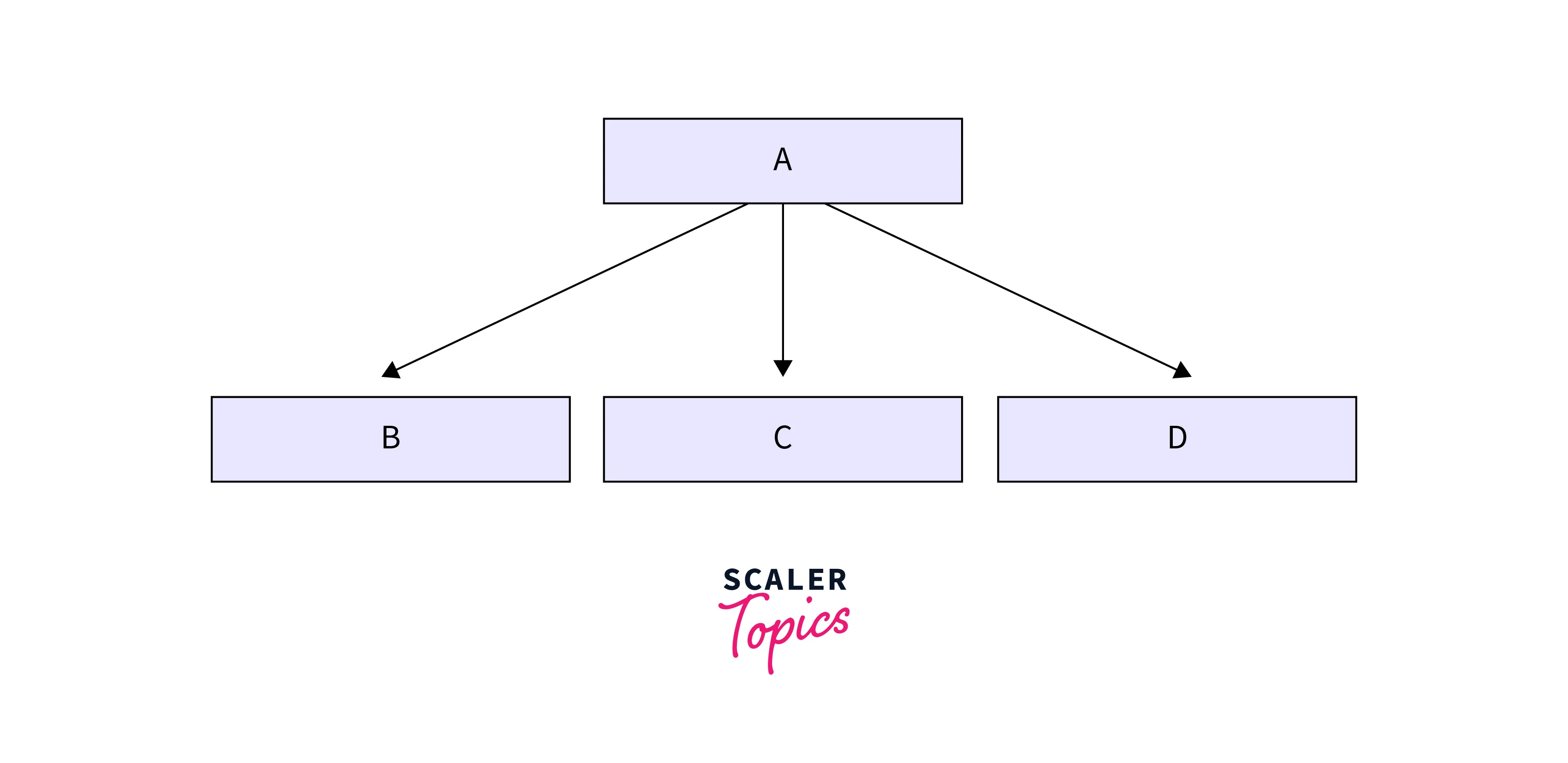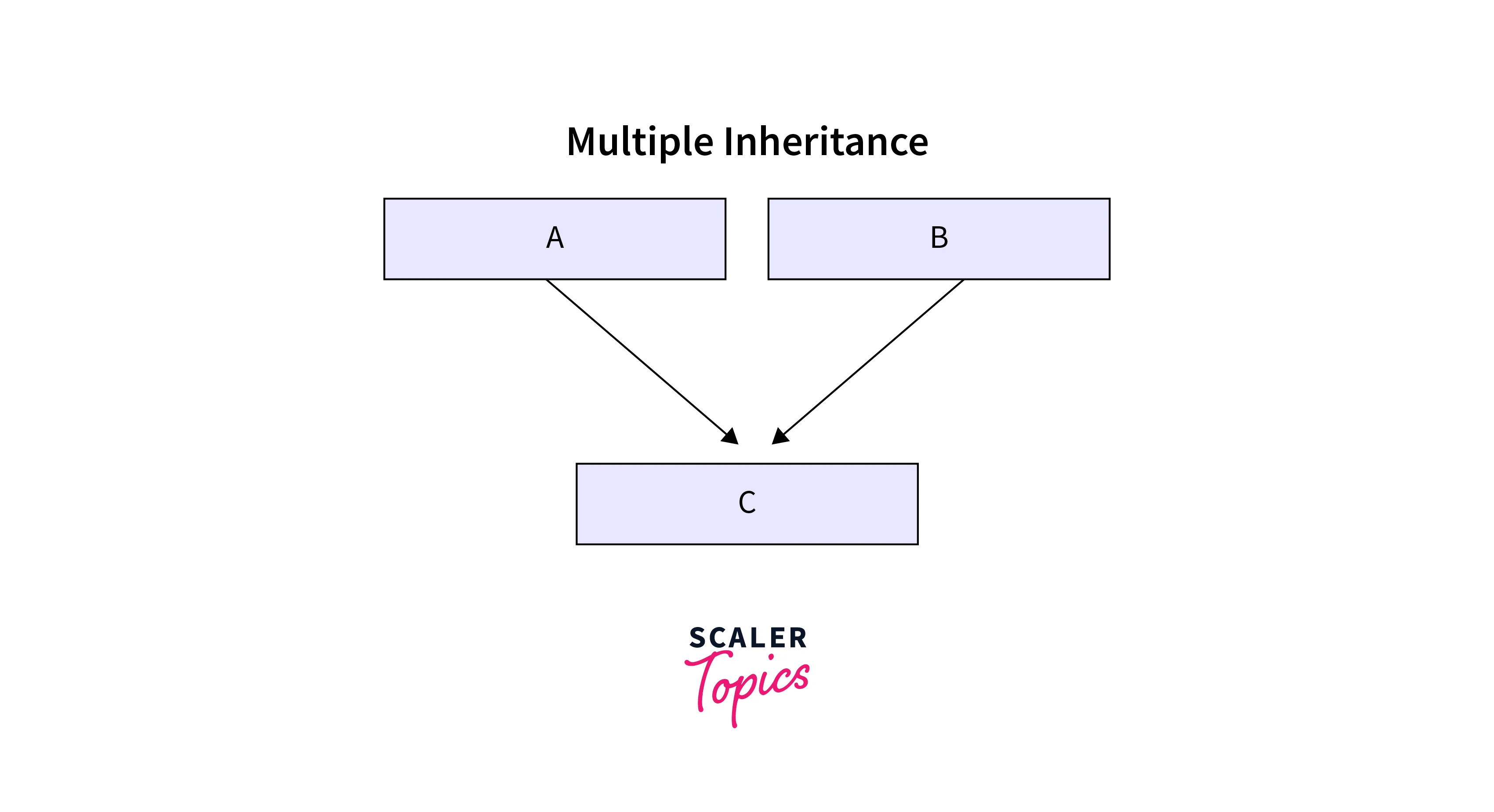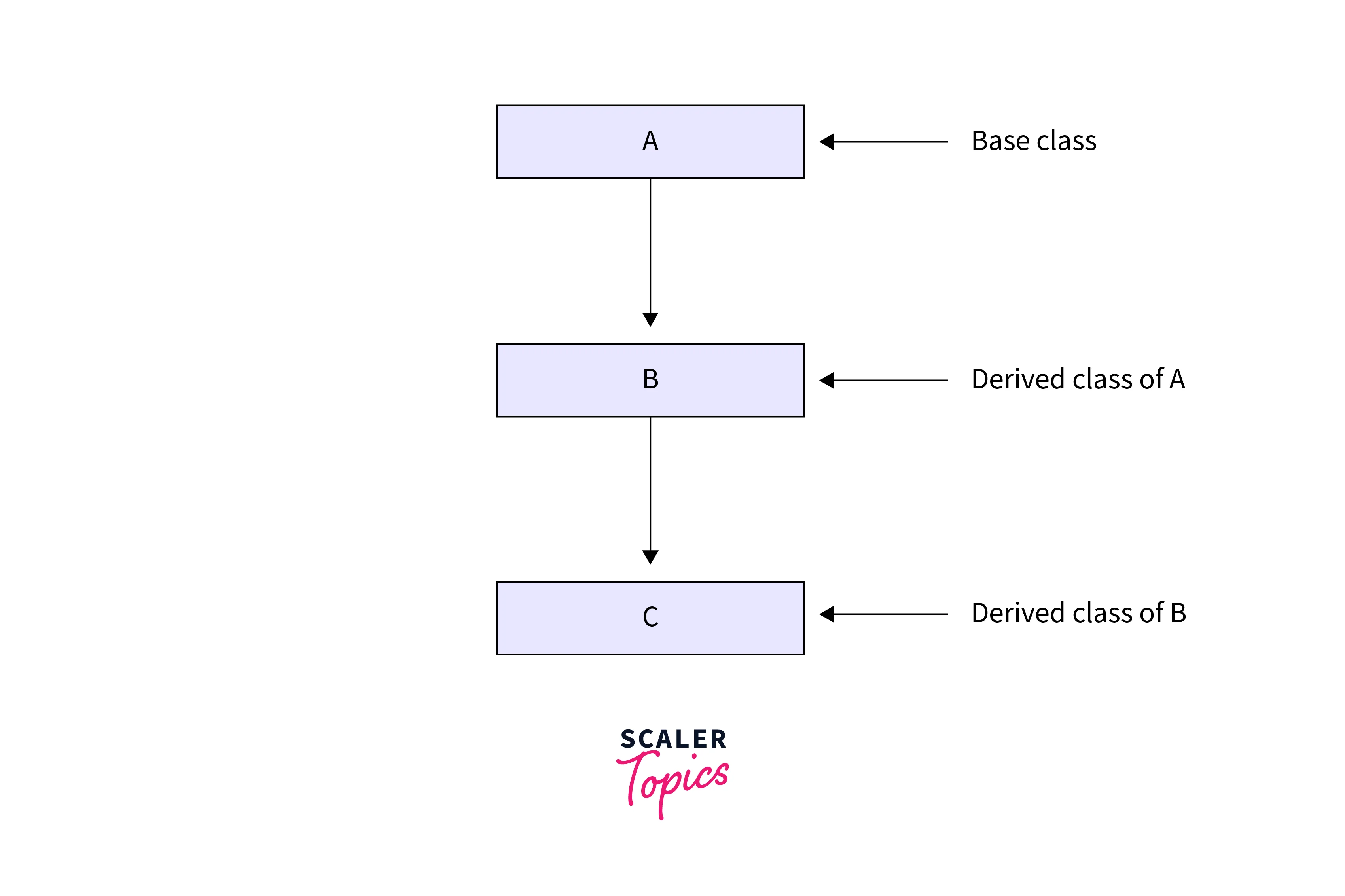Inheritance in OOPs
Overview
Object-oriented programming (OOP) is a programming paradigm that revolves around the concept of objects, which are instances of classes. Each class defines the blueprint for creating objects with specific attributes (data members) and behaviours (methods). Inheritance in OOPs is one of the most important aspects of object-oriented programming. OOP is all about real-world objects, and inheritance is a technique for simulating relationships in the real world. The fact that inheritance allows for code reuse is the key to understanding it. We can just inherit the properties of one class into the other rather than repeatedly writing the same code.
What is Inheritance?
Inheritance is a fundamental concept in object-oriented programming (OOP) where a class can inherit properties and behaviours from another class. It allows for the creation of a hierarchy of classes, with a superclass (also called a base class or parent class) and one or more subclasses (also known as derived classes or child classes).
The superclass serves as a template or blueprint that defines common attributes and methods, which can be shared by its subclasses. The subclasses inherit these attributes and methods, gaining the ability to reuse and extend the functionality defined in the superclass.

Inheritance promotes code reusability, as common characteristics and behaviours need not be defined repeatedly in each subclass. Instead, they are inherited from the superclass. This simplifies code maintenance and enhances modularity, as changes made to the superclass automatically reflect in its subclasses.
Inheritance in OOPs establishes an "is-a" relationship between classes. For example, if we have a superclass called "Animal" and a subclass called "Cat," we can say that a cat is an animal. This relationship provides a natural and intuitive way to model real-world entities and their hierarchical associations in code.
Example of inheritance
Lets understand inheritance better by some basic examples and its corresponding code in python:
Example 1: Animal Class and Subclasses
Explanation
In this example, we have an "Animal" base class with a "species" and "sound" attributes and a "make_sound" method. Then, we create two subclasses, "Dog" and "Cat," which inherit from the "Animal" class. Each subclass has its specific attributes and methods while also inheriting the common ones from the base class.
Example 2: Shape Class and Subclasses
Explanation
In this example, we have a "Shape" base class with a "color" attribute and an "area" method that returns 0. Then, we create two subclasses, "Circle" and "Rectangle," which inherit from the "Shape" class. Each subclass overrides the "area" method to calculate the area specific to its shape.
Types of Inheritance
There are several types of inheritance in OOPs that define the relationships between classes. Let's explore some commonly used types of inheritance:
- Single Inheritance: In single inheritance, a subclass inherits from a single superclass. The subclass inherits all the properties and behaviours of the superclass, extending or modifying them as needed. It represents an "is-a" relationship, where the subclass is a specialized version of the superclass.
- Multiple Inheritance: Multiple inheritance allows a subclass to inherit from multiple superclasses. The subclass inherits properties and behaviours from all the superclasses, combining them into a single derived class. This enables code reuse from multiple sources, but it can also introduce complexity and potential conflicts.

- Multilevel Inheritance: Multilevel inheritance involves a chain of inheritance, where a subclass inherits from another subclass, creating a hierarchy of classes. Each subclass inherits properties and behaviours from its immediate superclass, extending the inheritance chain.

- Hierarchical Inheritance: Hierarchical inheritance occurs when multiple subclasses inherit from a single superclass. It represents a one-to-many relationship, where the superclass is at the top of the hierarchy, and the subclasses extend its behaviour in different ways.
- Hybrid Inheritance: Hybrid inheritance is a combination of different types of inheritance, such as single inheritance and multiple inheritance. It allows for greater flexibility in creating class hierarchies by incorporating various inheritance mechanisms.
- Virtual Inheritance: Virtual inheritance is used to resolve the "diamond problem" in multiple inheritance. It allows a class to have a single instance of a common base class, even if it is inherited through multiple paths. This ensures that the common base class's member variables are not duplicated.
Advantages of Inheritance
Inheritance in OOPs offers several advantages that contribute to code reusability, modularity, and flexibility. Here are some key advantages of using inheritance:
- Code Reusability: Inheritance allows classes to inherit properties and behaviours from existing classes. This promotes code reuse, as common attributes and methods defined in a superclass can be inherited by multiple subclasses. Instead of rewriting the same code in different classes, inheritance enables the reuse of existing code, saving development time and effort.
- Modularity and Extensibility: Inheritance supports a modular approach to software design. It allows for the creation of a hierarchy of classes, where subclasses can inherit and extend the functionality of a superclass. New classes can be easily added to the hierarchy, inheriting the common characteristics and behaviours of the superclass while adding their own unique features.
- Code Organization: Inheritance helps in organizing code by creating a hierarchical structure of classes. Common attributes and methods are placed in the superclass, providing a centralized location for shared functionality. This improves code readability and maintainability, as related classes are grouped together based on their inheritance relationships.
- Polymorphism: Inheritance plays a crucial role in achieving polymorphism, another important principle in object-oriented programming. Polymorphism enables objects of many classes to be viewed as belonging to a single superclass. This enables more flexibility and abstraction in program design, as different subclasses can be used interchangeably through a shared superclass interface. Polymorphism simplifies code implementation and enhances code flexibility.
- Encapsulation and Information Hiding: Inheritance supports encapsulation, one of the core principles of object-oriented programming. By defining attributes and methods in a superclass, inheritance helps in encapsulating related data and behaviors. This promotes information hiding, where the internal details of a class can be kept private and accessed only through well-defined interfaces.
Disadvantages of Inheritance
While inheritance provides several benefits, there are also some potential disadvantages that should be considered. Here are some of the main disadvantages of inheritance in object-oriented programming:
- Increased Complexity: Inheritance hierarchies can become complex and difficult to understand, especially in large systems. As more classes are derived from a common superclass, the relationships between classes can become intricate, leading to a higher level of complexity. This complexity can make code maintenance and debugging more challenging.
- Multiple Inheritance: Multiple inheritance allows a class to inherit from more than one base class. While it provides flexibility, it can lead to complex class hierarchies and potential conflicts when two or more base classes define methods or attributes with the same name. This can make the code harder to understand and debug.
- Diamond Problem: The diamond problem occurs in languages that support multiple inheritance, where a class inherits from two or more classes that have a common base class. If the subclass calls a method from the common base class, it can lead to ambiguity as to which version of the method to use, causing conflicts in the program's behavior. This can result in unexpected bugs and difficulties in maintaining the code.
- Limited Code Reusability: While inheritance promotes code reuse, it can also lead to a less flexible form of code reuse. Subclasses are tightly coupled to the superclass, and they inherit all of its attributes and behaviors, even if they don't need or use all of them. This can result in a bloated subclass with unnecessary inherited features, reducing code reusability and increasing the complexity of the class.
- Violation of Encapsulation: Inheritance can potentially violate the principle of encapsulation, as subclasses have access to the protected and public members of the superclass. This can make it harder to control access to certain attributes or methods, leading to potential issues with data integrity and security.
- Difficulty in Understanding and Maintenance: Inheritance hierarchies can make the codebase more difficult to understand and maintain, especially for developers who are not familiar with the hierarchy. Understanding the relationships between classes and determining the impact of changes can be challenging, potentially leading to errors and reduced productivity.
Constructors in inheritance
Constructors in inheritance play an essential role in initializing the state of objects across the inheritance hierarchy. When a class inherits from another class, constructors are used to ensure proper initialization of both the subclass and superclass.
Here are some key points to understand constructors in inheritance:
- Constructor Chaining: When a subclass is created, its constructor is responsible for invoking the constructor of the superclass to initialize the inherited members. This process is known as constructor chaining or constructor delegation. It ensures that the superclass's state is properly initialized before initializing the subclass.
- Implicit Superclass Constructor Call: If the subclass constructor does not explicitly call a superclass constructor, the compiler automatically inserts an implicit call to the superclass's default constructor. This ensures that the superclass is properly initialized.
- Explicit Superclass Constructor Call: In cases where the superclass does not have a default constructor or when the subclass constructor needs to pass arguments to the superclass constructor, an explicit call to the superclass constructor is required using the super keyword. This allows the subclass constructor to provide the necessary arguments and control the initialization process.
- Constructor Overloading: Inheritance allows constructors to be overloaded in both the superclass and subclass. Each constructor can have its own set of parameters, enabling different initialization scenarios based on the specific requirements of each class.
- Execution Order: During object creation, constructors are executed in a specific order. First, the superclass constructor is called, followed by the subclass constructor. This ensures that the initialization hierarchy is maintained, allowing each constructor to properly initialize its respective class.
FAQs
Q. Can a subclass inherit from multiple superclasses?
A. Yes, multiple inheritance allows a subclass to inherit from multiple superclasses, gaining properties and behaviors from each parent class. However, it can introduce complexities and conflicts in some programming languages.
Q. What is the difference between single and multiple inheritance?
A. Single inheritance involves a subclass inheriting from a single superclass, while multiple inheritance allows a subclass to inherit from multiple superclasses. Single inheritance represents a straightforward "is-a" relationship, while multiple inheritance offers greater flexibility and code reuse but can be more complex.
Q. What is the role of the "super" keyword in inheritance?
A. The "super" keyword is used to access the superclass and call its constructor or methods. It facilitates proper initialization of inherited members and allows for extending or modifying the behavior of the superclass.
Conclusion
- A key idea in object-oriented programming is inheritance, which enables classes to take on traits and characteristics from other classes.
- It promotes code reusability by enabling the reuse of existing code through inheritance hierarchies.
- Inheritance in OOPs establishes relationships between classes, such as "is-a" and specialization relationships.
- Constructors play a crucial role in inheritance, ensuring proper initialization of both the subclass and superclass.
- Inheritance supports modularity, extensibility, and code organization by creating a hierarchical structure of classes.
- Polymorphism is facilitated through inheritance, allowing objects of different classes to be treated as objects of a common superclass.
- Inheritance has advantages, such as code reusability, modularity, and polymorphism, but it can also introduce complexities, rigidity, and increased coupling.
- Careful design and consideration are necessary to effectively utilize inheritance and mitigate potential disadvantages.
